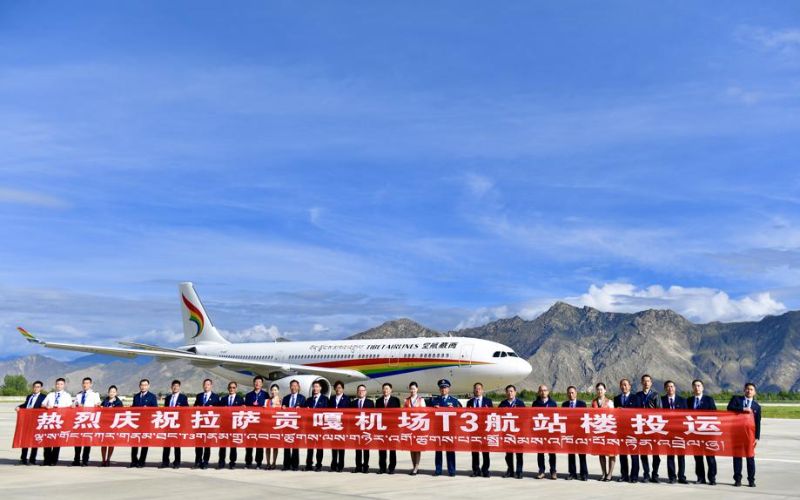
A recent report by Tibet Daily reveals that Chinese authorities in occupied Tibet is planning to undertake 191 key projects this year with an investment of more than 143 billion yuan ($21 billion). The investment will be used for key infrastructure projects, characteristic industries, ecological civilization, border-area consolidation and improvement of livelihoods.
The fast-paced growth of infrastructure in occupied Tibet is "dual -use" in nature: they serve both civil and military purposes as far as PRC is concerned. China is building dual use infrastructure in Tibet to enable the rapid deployment of its forces at strategic locations in any eventuality but at the same time fulfill CCP's strategy of cultural assimilation of Tibet.
Many Tibetans fear that these investments are part of China's plan to assert greater control over Tibet and suppress Tibetan culture. The Tibetan government-in-exile has called for greater transparency and consultation with Tibetans in the planning and implementation of these projects.
Local Tibetans also worry about the environmental impact of these projects, particularly the Nyingchi-Ya'an section of the Sichuan-Tibet Railway, which will cut through a pristine forest and disrupt the habitat of endangered species. The renovation of Gonggar Airport in Lhasa could also have negative environmental impacts, as it is situated in a sensitive wetland area.
While the Chinese government claims that the investment will be used to promote clean energy and protect the environment, some locals believe that the projects will lead to more environmental degradation, particularly in rural areas.
China claims that since the 1990’s, the government of the Communist Party of China (CPC) has made “an unprecedented scale of investment in infrastructure build-up in Tibet, specifically in the areas of connectivity such as railways, roads and airports”. Investments were also made in Tibet to build hydro-power energy, for urbanization, mining, tourism, military and government infrastructure. These massive investments in infrastructure build-up are in fact, Chinese strategy to strengthen its control over the region which it unlawfully invaded and occupied.
Moreover, the investment will primarily benefit the government and big businesses, with little trickle-down effect for ordinary people. Despite the government's claims of improving livelihoods, many Tibetans still struggle with poverty and lack access to basic services such as healthcare and education. Some Tibetans also fear that the projects will lead to displacement and loss of traditional livelihoods.
Furthermore, some are skeptical about the benefits of these projects for Tibetans, as they may primarily benefit Han Chinese migrants and investors. There are concerns that the development of characteristic industries, such as tourism infrastructure and plateau agriculture, may lead to further displacement and marginalization of Tibetans.
Edited and collated by Team TRC